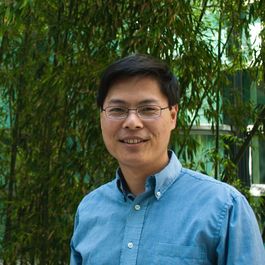March 13, 2024
Although COVID-19 has faded from the headlines, SARS-CoV-2 – the coronavirus behind the pandemic – is still rampantly infecting people around the world. Public health officials fear as the virus continues to evolve, it will eventually hit upon a diabolical mutation that renders current treatments ineffective, triggering a new wave of severe infection and social disruption.
In pursuit of new therapies to avoid this dark fate, researchers at Stanford have now unveiled a compound that measures up as a potentially powerful anti-coronavirus drug, detailed in a paper published March 13 in Science Translational Medicine. Dubbed ML2006a4, the compound works in the same way as Paxlovid – the most effective oral drug available to date – by binding to coronavirus particles and preventing the virus from making copies of itself. Compared to Paxlovid, though, ML2006a4 binds more tightly and durably, courtesy of the Stanford team custom-crafting the compound atom-by-atom.
In preclinical experiments, the compound prevented deadly infections in mice at a superior rate compared to Paxlovid. In addition, the new compound is potent enough that it could likely be formulated without an additional component present in Paxlovid that poses severe drug interaction concerns. Importantly, ML2006a4 also performed well against coronavirus variants that have already evolved degrees of resistance to Paxlovid, suggesting the compound’s honed affinity makes it less vulnerable to mutant virus strains.
“At this point entering the fifth year of the pandemic, Paxlovid is our only really good drug against SARS-CoV-2, but it’s proven fairly easy for the virus to evolve resistance to it,” said Michael Lin, the senior author of the study, who is an associate professor of neurobiology and of bioengineering in the schools of Medicine and Engineering and a member of Stanford Bio-X. “As new waves of coronavirus keep crashing down, we need to have alternative drugs that are more tolerant of mutations and not as easy for the virus to defeat.”
For the study, Lin worked closely with lead author Michael Westberg, now an assistant professor at Aarhus University in Denmark. From 2018 until 2022, Westberg worked in Lin’s lab as a visiting scholar at Stanford Bio-X, funded by the Novo Nordisk Foundation, through a joint program designed to strengthen international collaborations and the exchange of scientific expertise between Stanford and Denmark.
Read more: https://news.stanford.edu/stories/2024/03/drug-design-atomic-level-thwart-covid-19

Infectious Disease, Virology
Stanford University
Harrington Scholar-Innovator